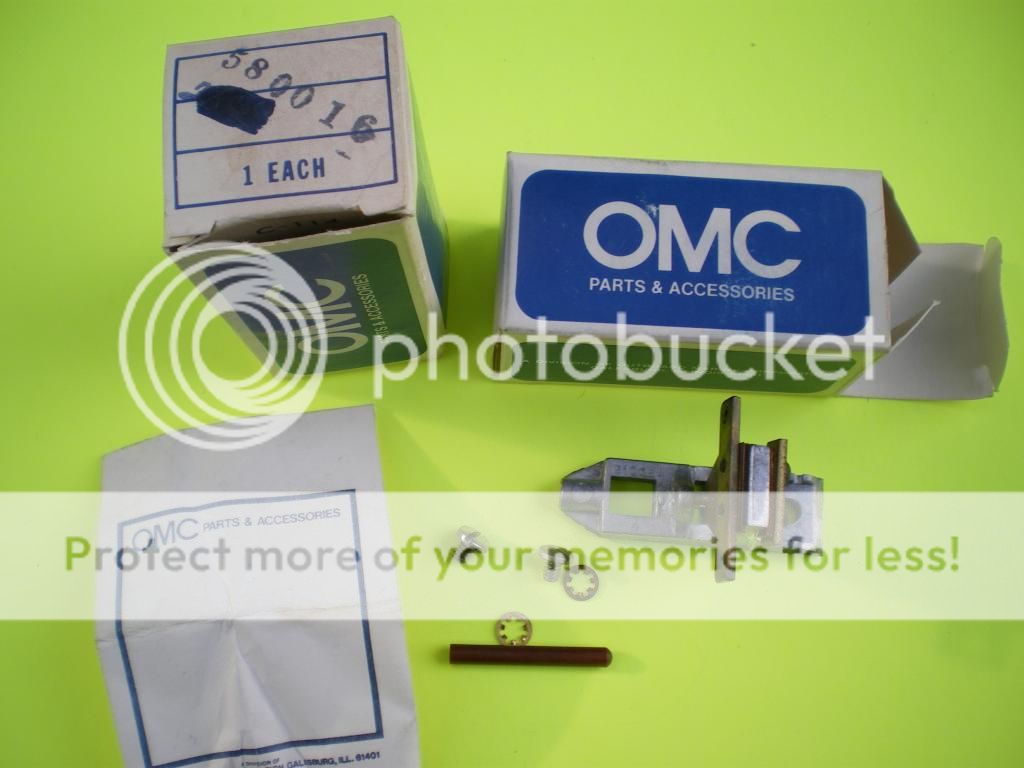Home › Forum › Ask A Member › 1940s OMC / Johnson breaker points question
- This topic has 7 replies, 4 voices, and was last updated 8 years, 10 months ago by
legendre.
-
AuthorPosts
-
June 20, 2015 at 3:56 am #1800
Some breaker points on the late 40’s Johnson / OMC engines are actuated by a pushrod, about 1.5" long. These pushrods have one end flat and one rounded.
Question – which end, flat or rounded, rides on the crankshaft points cam?
I have always assumed it should be the rounded end, which would seem to minimize wear. But the service manual for one of these engines declares that it’s IMPORTANT to run the flat end against the crank.
Could someone shed light on this?
June 20, 2015 at 5:09 am #18480The OMMC people who wrote the book got it right. Flat end to the crank.
If the round end was riding the crank, it would wear down quicker than the flat end which has more surface area to contact the crank. Looking at the points set themselves, the movable point actually folds over the pushrod slightly when they are opening so the rounded end acts like a ball bearing.
 June 20, 2015 at 8:11 am #18486
June 20, 2015 at 8:11 am #18486I only came across this issue today, when I was looking over the SC magneto in the service manual. The SC uses the same style of points as the TD / HD models, but for whatever reason this detail on pushrod orientation was only mentioned in the SC section. There’s no mention of pushrod orientation in the TD section, or at last not that I could find.
June 20, 2015 at 2:30 pm #18498I find the Johnson service manual incomplete as well1
June 21, 2015 at 7:07 am #18553quote Jeff Register:I find the Johnson service manual incomplete as well1So I’m not the only one who has noticed some inconsistencies..
And I also find the whole idea of setting the radiused end of the pushrod against the moving contact to be weird. I’d think the radius would run much more smoothly against the points cam, while the flat, squared-off end should be perfectly fine pushing on the points contact.
Doesn’t the cam tend to wear the flat end to an angle?? If it did, and the rod happened to rotate, it would change the timing! Just think about it for a moment.. leading vs. trailing edge of a beveled cam follower..
Not trying to start an argument, more that I’d like to understand the engineering theory behind this design decision.
June 21, 2015 at 4:38 pm #18584They don’t wear as quickly as you are imagining. The set you have are likely the originals from the 40s! It hits fairly square as well, not on an angle so beveled wear is not an issue.
June 22, 2015 at 9:09 pm #18703Yes,
That is how it read in the book. I think both ends should be rounded, BUT what do I know?June 23, 2015 at 11:23 pm #18784quote Chris_P:They don’t wear as quickly as you are imagining. The set you have are likely the originals from the 40s!I’d always assumed that was the case, but I wouldn’t know how to tell a set of late 40’s Johnson/OMC points from a 1960s-1970s replacement set.
quote :It hits fairly square as well, not on an angle so beveled wear is not an issue.Now that I think about it, the design makes good sense. Each pass of the cam swipes cleanly from one edge of the (flat) pushrod to the other. The situation on the other end isn’t quite the same. The end that actuates the moving contact experiences a a partial swipe, with the upper edge taking the brunt of the wear as the points open.
Having a radius on that end makes sense, as it limits the wear to a small radial area near the center line of the pushrod.
-
AuthorPosts
- You must be logged in to reply to this topic.

